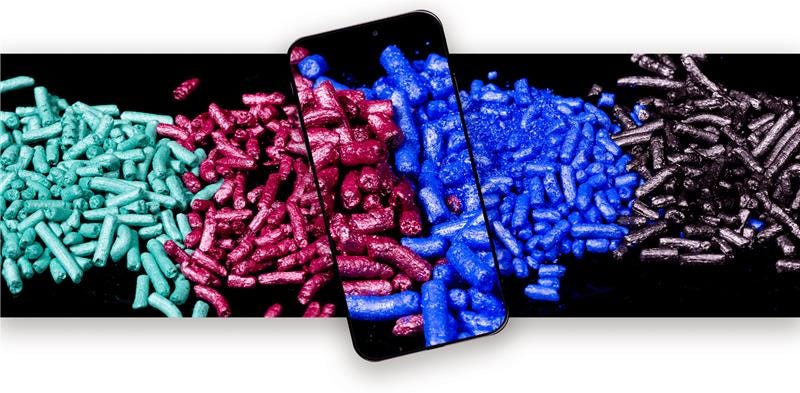The Ultimate Hydrocarbon Blush Guide for Cosmetic Formulators
Blush formulations have evolved significantly, offering consumers a variety of textures, finishes, and application methods. From silky pressed powders to creamy sticks and dewy liquid blushes, each format relies on a strategic selection of ingredients to achieve the desired performance and aesthetics. Among these, hydrocarbons play a crucial role in determining texture, spreadability, longevity, and finish.
For cosmetic formulators, understanding how different hydrocarbons contribute to blush formulations can simplify ingredient selection and enhance the overall quality of the final product.


Understanding Hydrocarbons in Blush Formulation
Hydrocarbons are a diverse class of emollients widely used in cosmetic formulations due to their ability to enhance texture, pigment dispersion, and overall wear. They can be synthetic or naturally derived and offer several benefits that make them indispensable in color cosmetics.
One of the primary reasons hydrocarbons are used in blush formulations is their ability to improve emolliency and application. A well-formulated blush should glide onto the skin effortlessly, leaving a smooth and even finish. Hydrocarbons help achieve this by reducing friction during application, allowing the blush to blend seamlessly into the skin.
Additionally, hydrocarbons contribute to pigment suspension and stability. Without proper dispersants, pigments can clump together or settle unevenly in the formulation, leading to inconsistent color payoff. Hydrocarbons such as Permethyl® 102A and Silkflo® 362 ensure that pigments remain evenly distributed, allowing for vibrant and true-to-pan color results.
Longevity is another critical factor in blush performance. Consumers want their blush to stay in place throughout the day without fading or smudging. Hydrocarbons such as Indopol® H-100 and Panalane® H300E create a film on the skin that helps lock in pigments, extending wear time and preventing color migration.
Lastly, texture modification is an essential consideration when formulating blushes. Whether aiming for a dewy, matte, or satin finish, different hydrocarbons can be incorporated to achieve the desired aesthetic effect. Siclone® SR-5, for example, provides a matte finish, while Panalane® L-2E contributes to a dewy glow.
Matching Hydrocarbons to Blush Formats
Different blush formats require specific hydrocarbons to optimize their performance. The selection of hydrocarbons must align with the intended application method, finish, and consumer expectations.
Cream-to-Powder Blushes
Cream-to-powder blushes require a balance of lightweight texture and blendability. These formulations must start as a smooth cream but set to a powdery finish once applied to the skin. Hydrocarbons such as Permethyl® 99A and Siclone® SR-5 help achieve this transformation by providing controlled volatility and an even matte effect upon drying. Silkflo® 366 is also commonly used to improve skin feel and smoothness.
Loose Powder Blushes
Loose powder blushes need excellent pigment dispersion and a silky, non-cakey feel on the skin. The primary concern for formulators is ensuring that the powder applies evenly without clumping or patchiness. Permethyl® 102A and Silkflo® 362 work well in these formulations by improving slip, ensuring a lightweight feel, and promoting even color distribution.
Pressed Powder Blushes
Pressed powder blushes require adhesion, smooth texture, and blendability. Since these formulations involve compacting powders into a solid form, hydrocarbons must provide adequate binding properties while maintaining a soft texture. Permethyl® 102A and Indopol® H-100 are commonly used in pressed powders to facilitate pigment binding and improve payoff without compromising blendability.
Cream Blush Sticks
Cream blush sticks need to remain stable in a solid format while still offering a creamy, blendable texture upon application. These formulations require hydrocarbons that offer structural integrity without feeling too stiff. Permethyl® 101A and Indopol® H-100 provide the necessary balance between firmness and spreadability, allowing for a smooth, buildable application.
Liquid Blushes
Liquid blushes should feel lightweight on the skin while offering a natural, dewy finish. They often contain a high concentration of volatile ingredients to ensure quick dry-down while maintaining blendability. Hydrocarbons such as Permethyl® 99A and Panalane® L-2E are excellent choices for creating a fluid, spreadable formula that melts into the skin.
Gel Blushes
Gel blushes require smooth application, hydration, and excellent spreadability. These formulations often rely on hydrocarbons to create a weightless yet conditioning texture. Silkflo® 362 and Panalane® L-2E contribute to a refreshing skin feel while maintaining pigment stability.
Blush Formulation Attributes and Supporting Hydrocarbons
To create the perfect blush formulation, formulators must consider specific product attributes and choose hydrocarbons that enhance these features:
- High Shine: To create a glossy or luminous effect, hydrocarbons such as Panalane® H-300E and Indopol® H-300 provide a light-reflective finish.
- Longwear Performance: Ingredients such as Permethyl® 99A and Panalane® H300E help create a lasting film on the skin to prevent color from fading.
- Matte Finish: Matte blushes benefit from Permethyl® 99A and Siclone® SR-5, which help reduce shine and provide a soft-focus effect.
- Dewy Finish: A radiant, healthy glow can be achieved using Panalane® L-2E, Panalane® L-14E, and Panalane® H-300E.
- Silky/Soft Texture & Skin Conditioning: Hydrocarbons such as Silkflo® 362, Silkflo® 364, and Silkflo® 366 help improve the sensory experience and provide a luxurious feel.
- Blendability & Spreadability: Permethyl® 101A and Silkflo® 362 contribute to seamless application and easy layering.
- Pigment Dispersibility & Solvency: To ensure vibrant color payoff and smooth pigment integration, formulators can use Permethyl® 99A, Permethyl® 101A, and Siclone® SR-5.
Choosing the Right Hydrocarbon for Your Formulation Needs
When formulating a blush product, selecting the right hydrocarbons involves several considerations:
- Consumer Preferences: What type of finish and texture does the target audience prefer?
- Product Functionality: Should the blush be sheer and natural, or highly pigmented and long-wearing?
- Ingredient Compatibility: How do hydrocarbons interact with other emollients, pigments, and active ingredients?
- Regulatory and Sustainability Considerations: Are the hydrocarbons compliant with clean beauty standards?
By carefully selecting hydrocarbons, formulators can optimize their blush formulations for superior performance and consumer satisfaction.
Final Thoughts & Next Steps
Hydrocarbons are integral to the performance, aesthetics, and functionality of blush formulations. From providing a smooth glide to enhancing pigment dispersion and longevity, they offer formulators a versatile tool to create innovative and consumer-friendly products.
Next Steps
- Explore our hydrocarbon ingredient offerings.
- Download our blush guide.
- Book time with one of our expert chemists to get all of your formulation questions answered.
Ready to take your blush formulations to the next level? Get in touch with us today to find the perfect hydrocarbons for your next cosmetic innovation!



